We have spent the extended weekend from Friday to Sunday, in the absence of our brick layers, working on the lining of the big machinery and maintenance room. We finished the two smaller rooms, the clay making room and the other small rock crushing and grinding glaze preparation room. These rooms will have some dusty machines, crushing rocks into powder and milling that dust down to very fine glaze material. These activities need to be separated from the other working spaces to contain the dust and on occasion some noise, like the clatter of the ball mill tumbler and the chomp, chomp, chomp, of the jaw crusher.
I have ordered a dust extractor fan for each room, but they each have a big roller door in the back wall as well, so I can have plenty of fresh air in there when necessary, and I can also hose them out when required.

We have started in the big room, simply because the electricians have finished all the wiring in this room, so we can now cover all the wiring in the wall cavity. I’d rather be lining the pottery studio, but the electricians have left that room till last, so it is still not finished, hence, we can’t get in there to do any lining.
In the bigger industrially focussed maintenance and repair shed, we have been busy placing the insulwool into the wall cavity and then screwing on the re-cycled gal iron sheeting. The North wall is now complete and we have started on the West end and the southern wall.
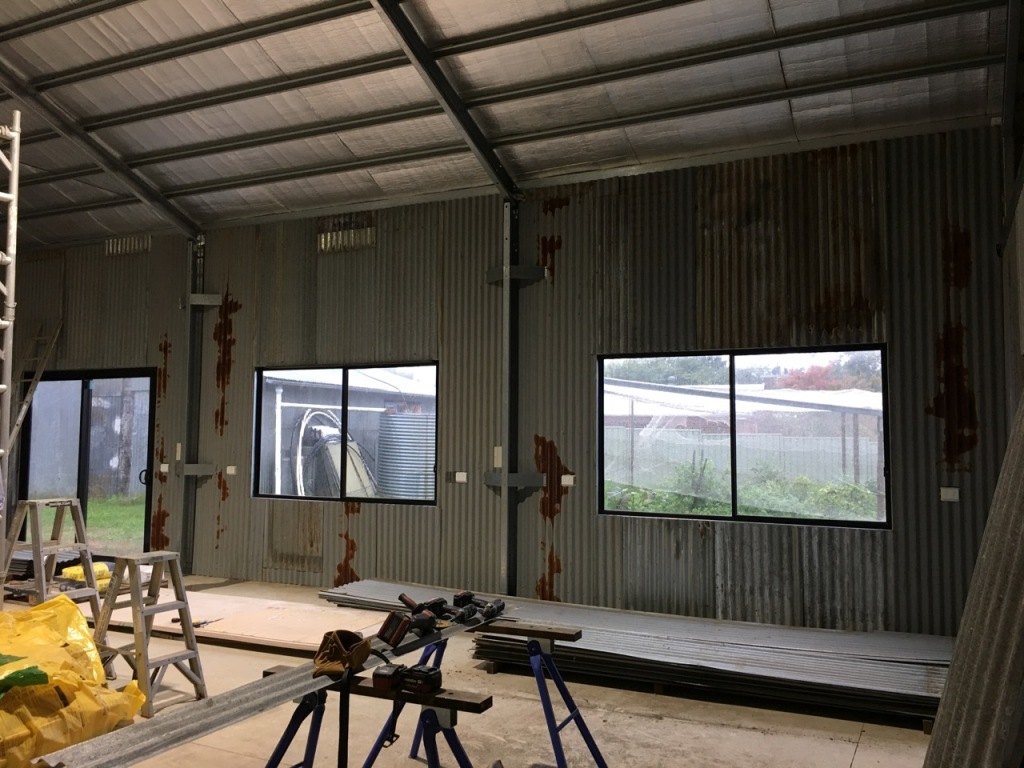
The long weekend has flown by. The heavy rain turned to torrential, then to just short of flooding rain. All 4 dams filled up and over flowed on Saturday night. There is flooding reported in the lower laying areas around Sydney.

It’s an very odd image to my mind, to see a dam full of water and overflowing with a back drop of dead, burnt and blackened trees.
We have been dry and warm in our shed working productively and listening to the heavy rain beating down on the tin roof, drumming out a rhythm with the gusting winds, pulsing and hammering. So loud sometimes that we have to yell to be heard.
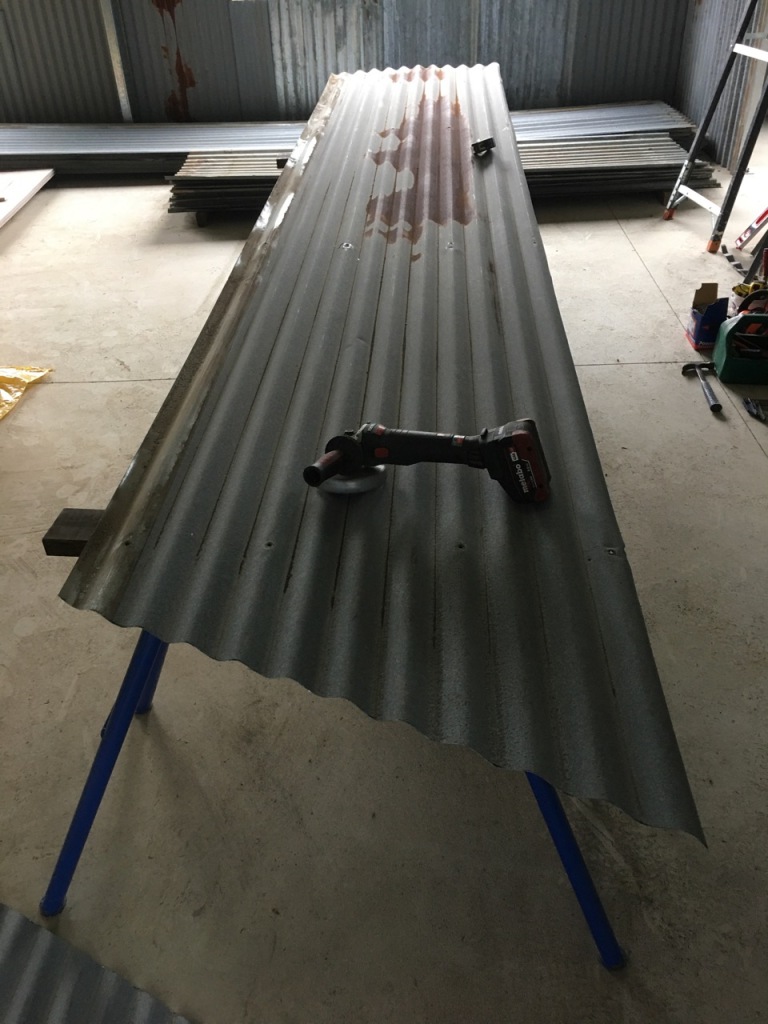
We have to wear ear muffs a lot of the time, not because of the rain, but because I have to cut the steel sheeting to size and profile with the small hand held angle grinder. This also entails wearing goggles and gloves. I start to feel a bit disconnected and isolated inside this safety gear. I’m pleased to remove it after each session of cutting.

Because of the flooding rain, we have postponed the bricklayers next visit for another week, as everything is just saturated. Even though we covered all the bricks with plastic tarps. The rain has been so severe, that the water flowed under the brick pile and the evaporation and condensation under the tarps is considerable. We need a few days of warm weather and sunshine to dry the site and the bricks out.
We have spent all of this Monday working on the lining of the big shed, making it 4 days straight of wall insulating paneling. We finished most of it, except the mezzanine floor today.
It’s starting to look more complete.


As we have a whole week without brick layers, we will get a lot of time to work on the lining.




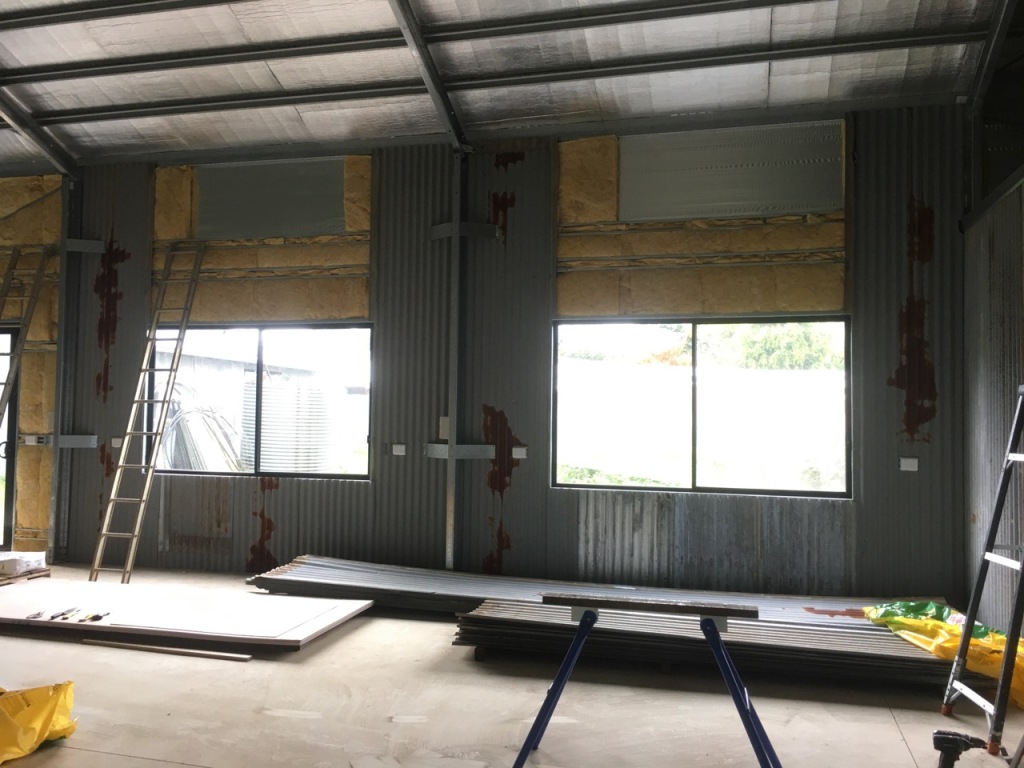








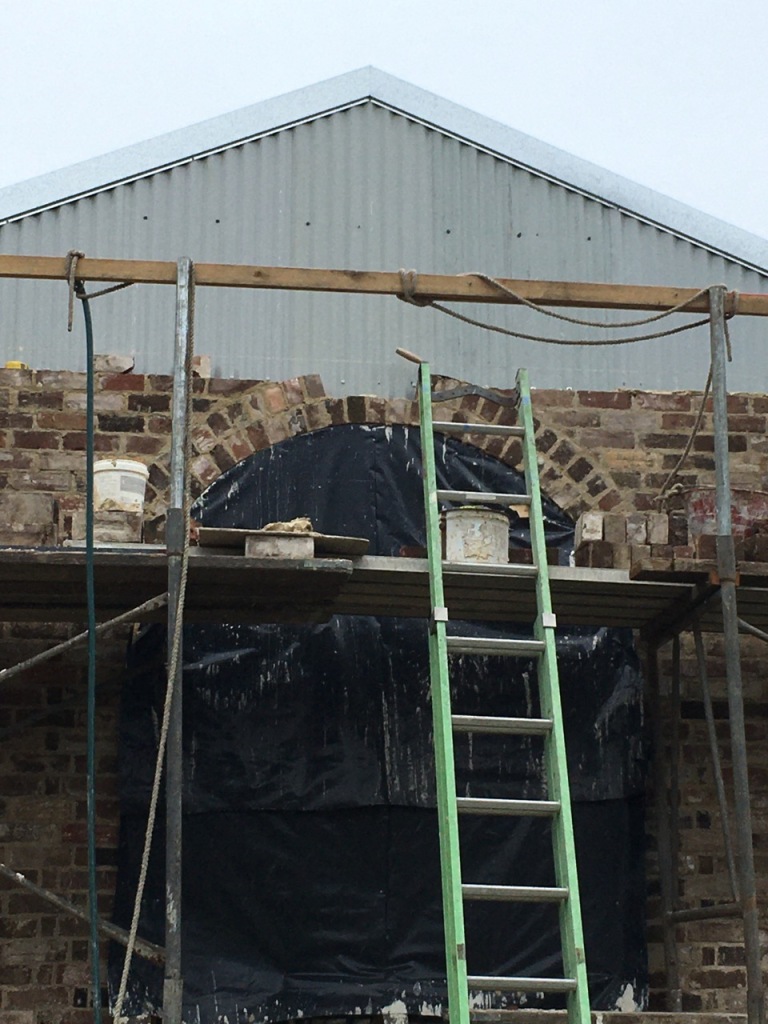








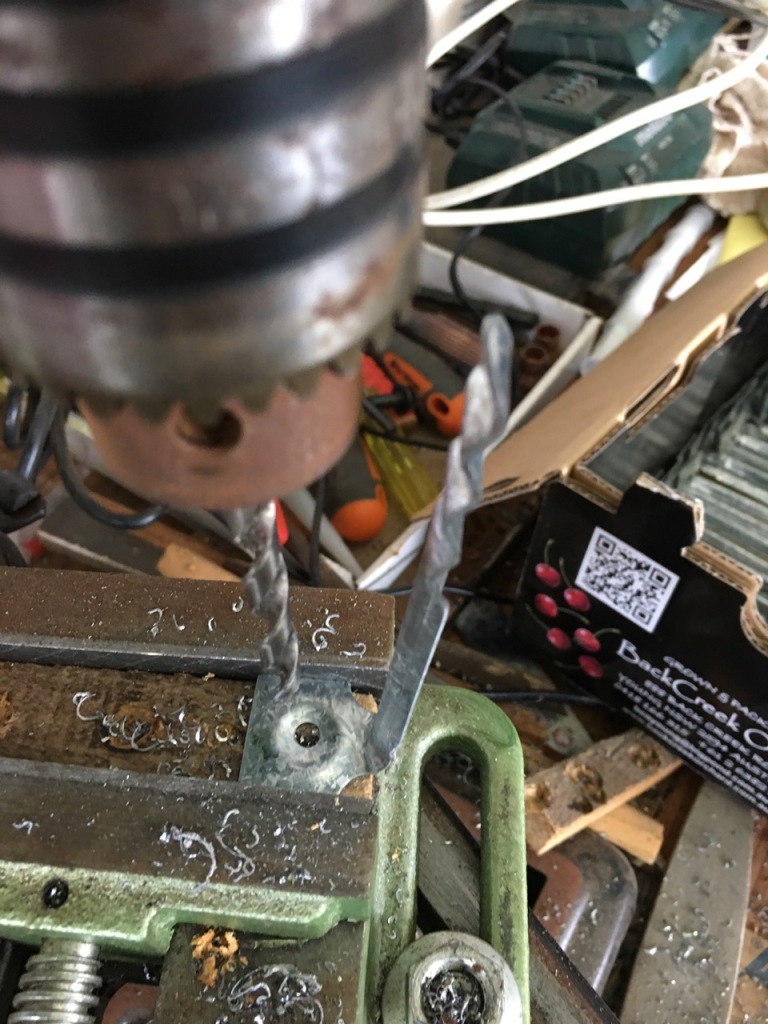


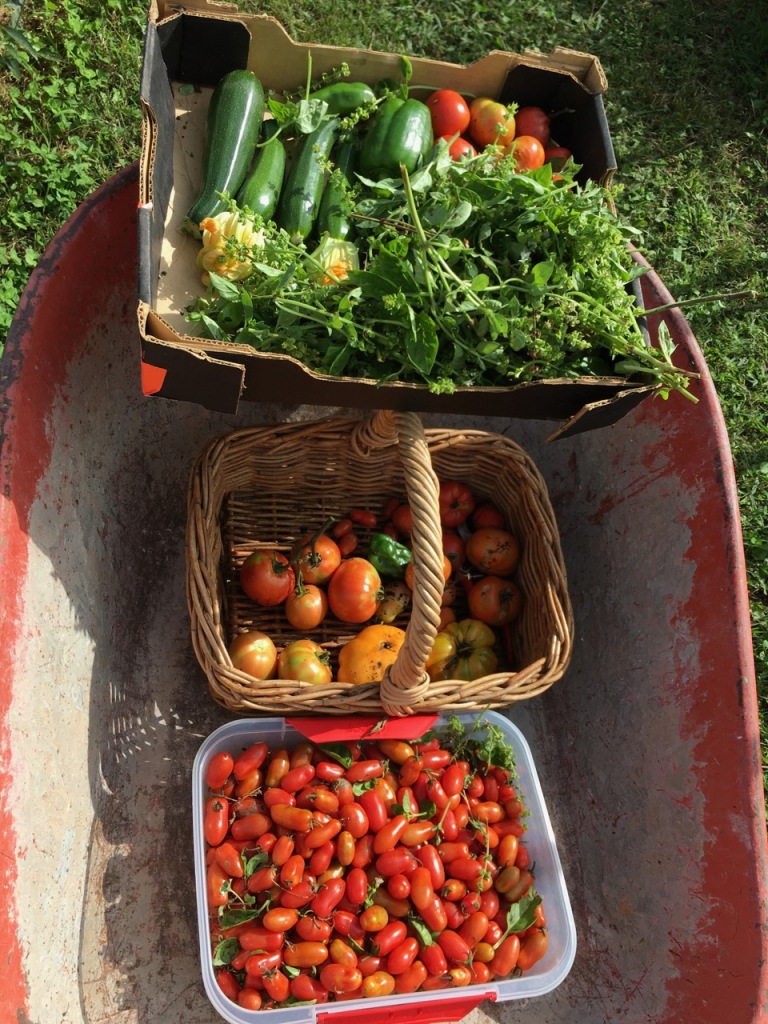

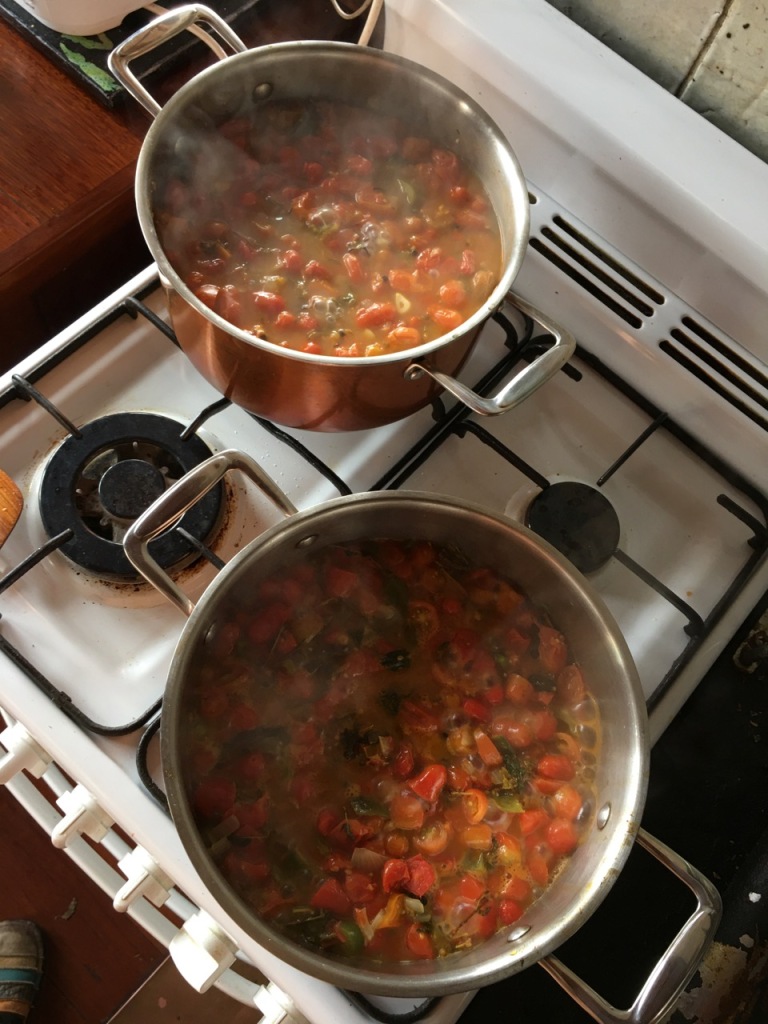




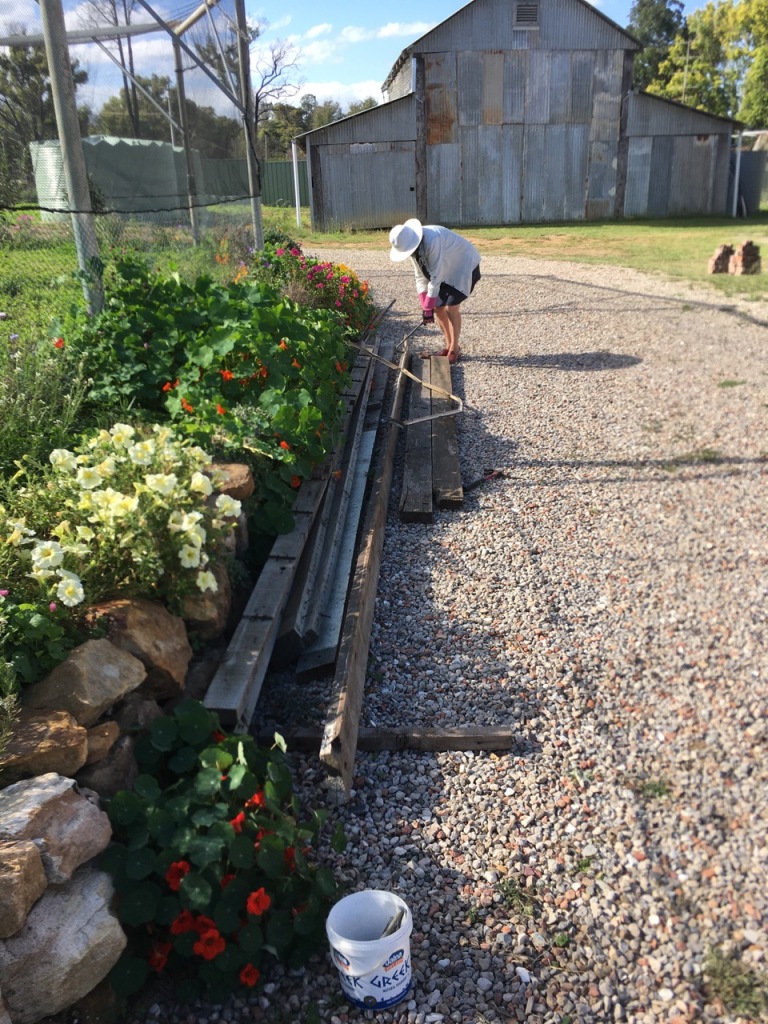





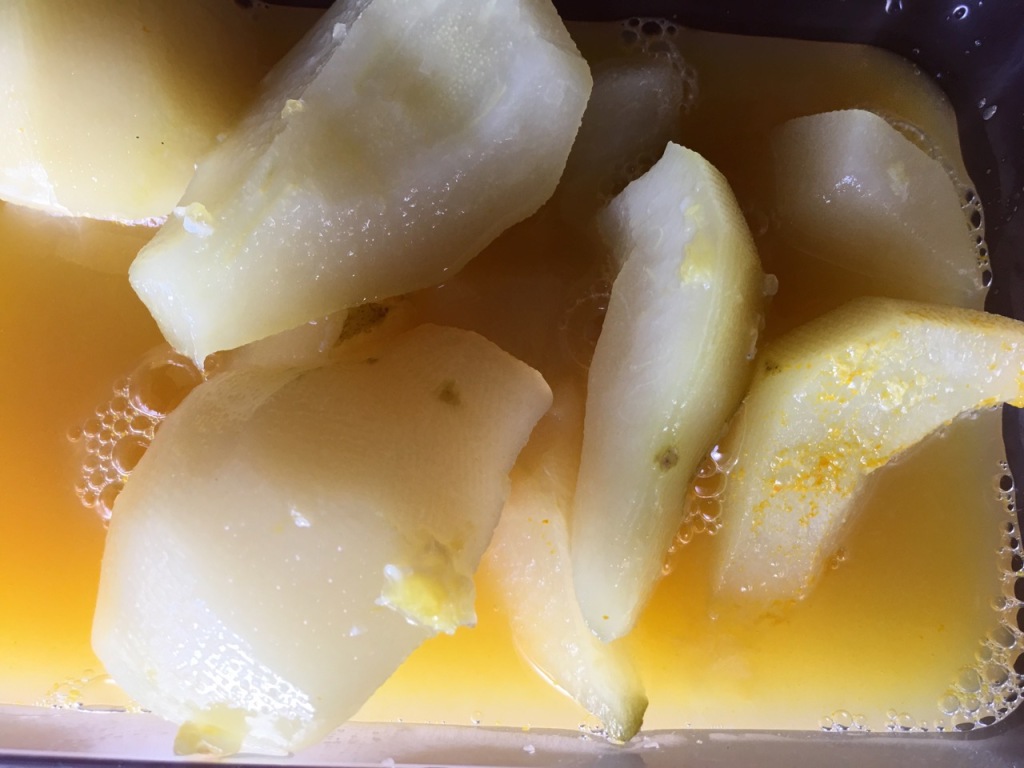
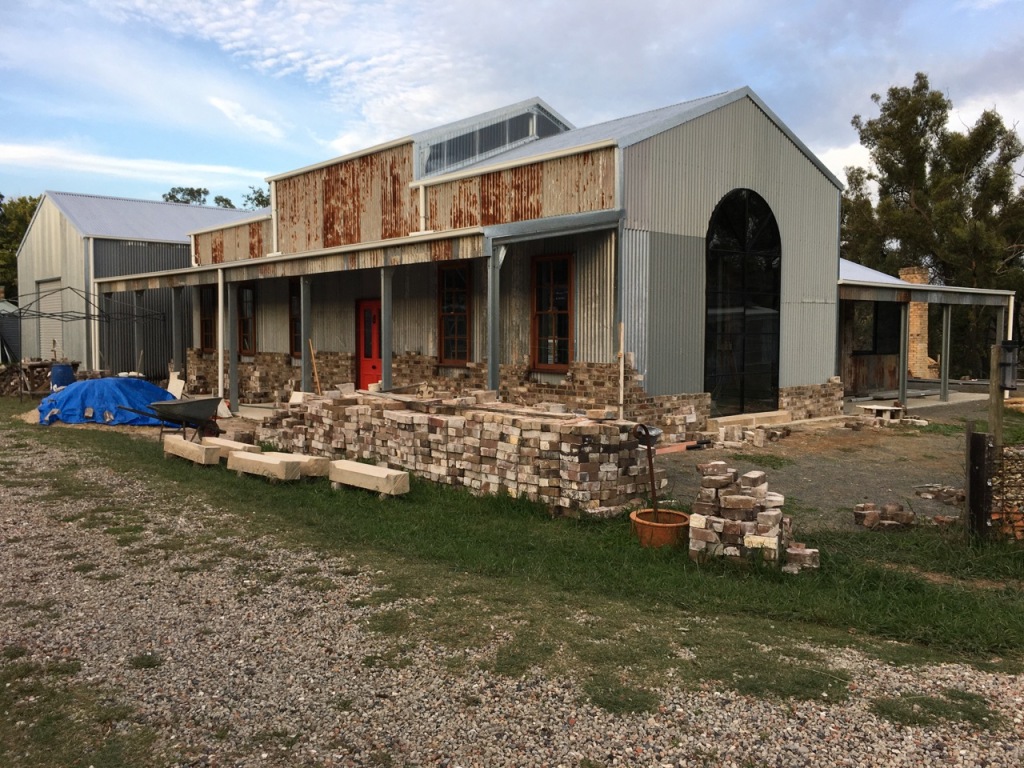
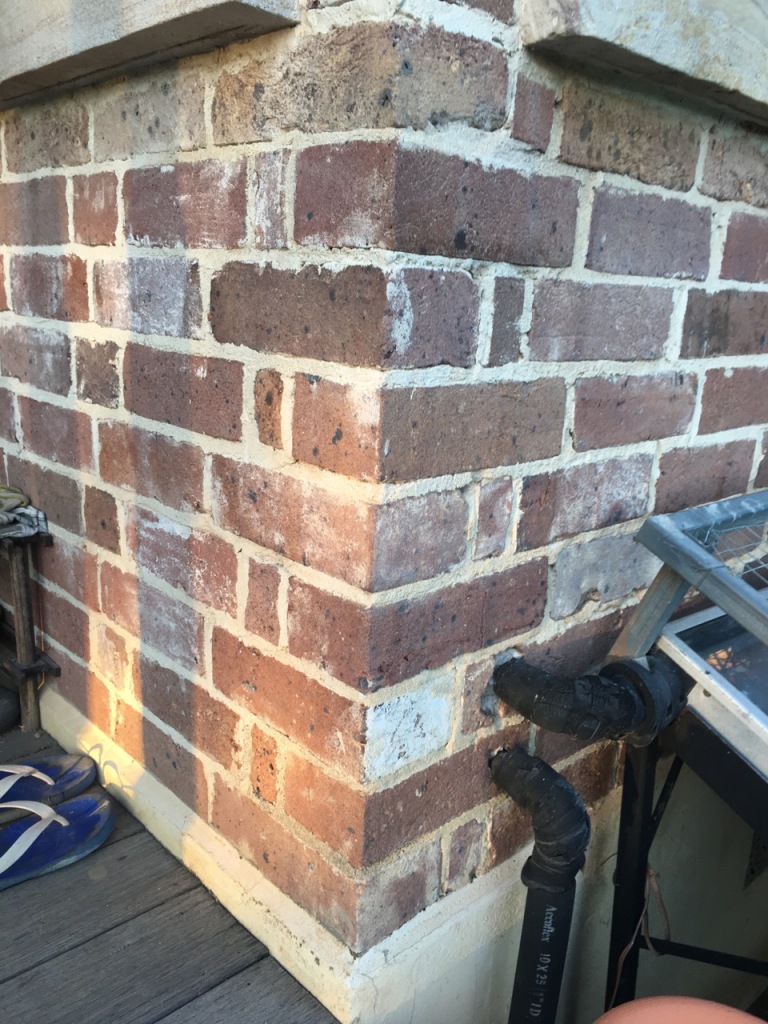
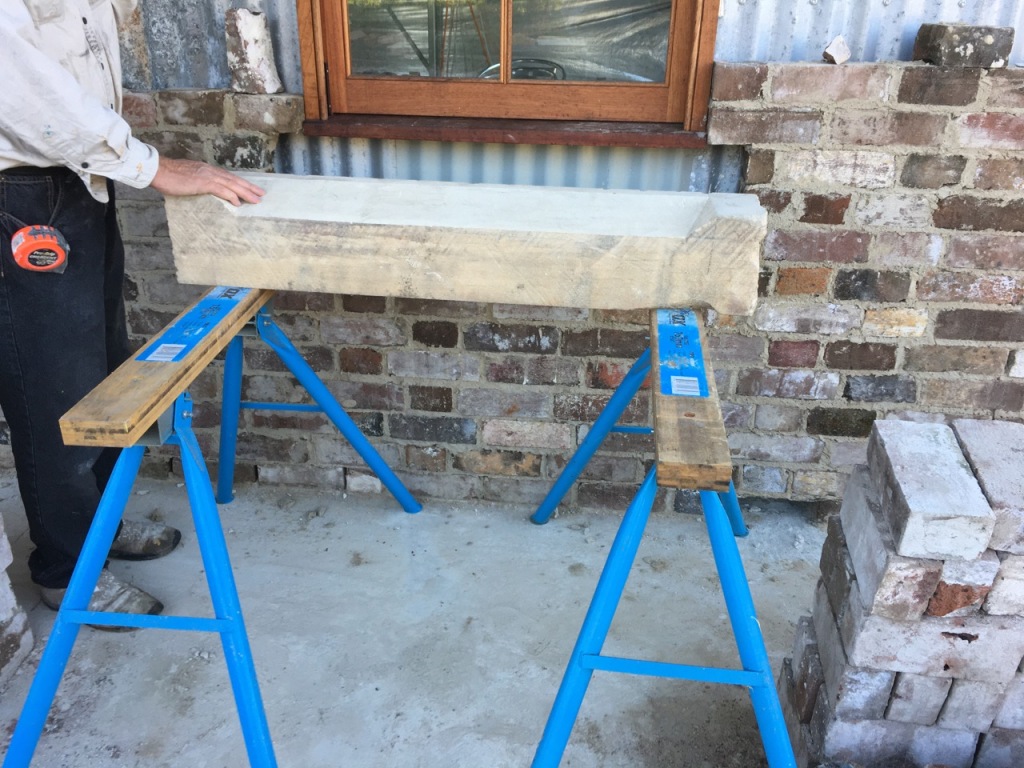
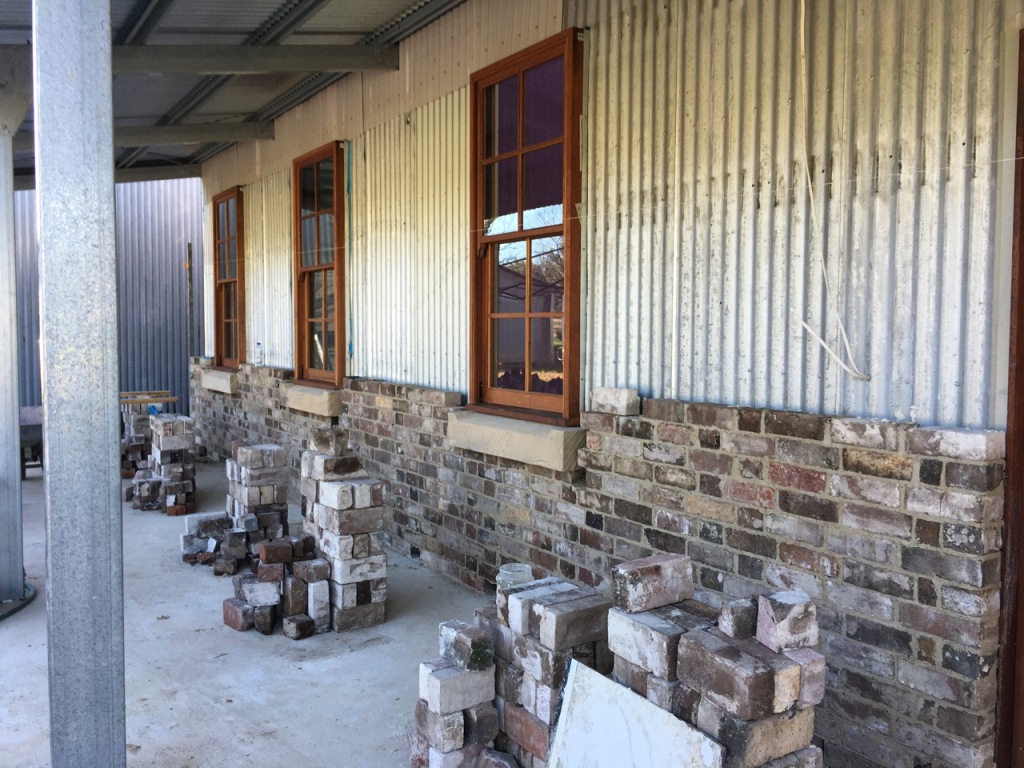
You must be logged in to post a comment.